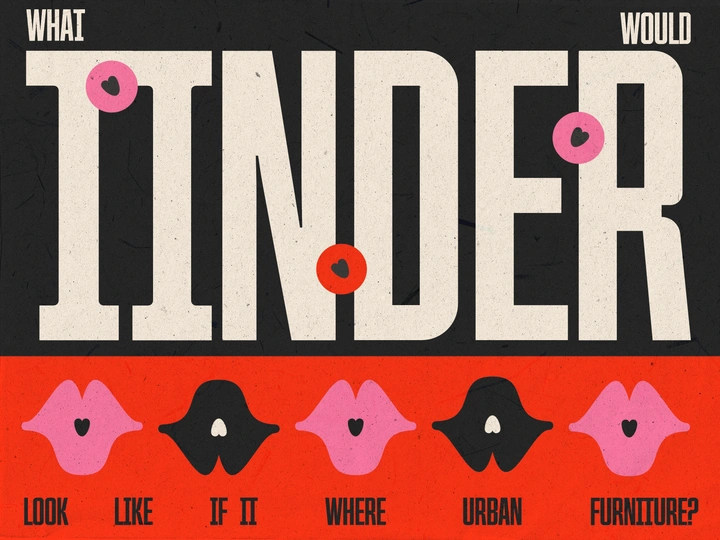What`d Tinder look like if it was urban furniture?

Patrycja Mróz
Here’s how our studio began: In the early 2010s, fresh out of university, we visited construction sites. Seeing the lack of respect for construction workers, we thought: 'Why not give them a voice?’ That’s how our Fair Building project ended up at the 15th Venice Architecture Biennale. That project shaped our architectural practice. It made us realize what we want to do: use design to empower the overlooked—people, nature, and social issues. Each project is a team effort. We respect workers contributions and optimize projects to limit excess in both materials and human work.We’re a small yet creative team of creators with backgrounds in architecture, design, and research. The studio is led by Dominika Janicka, an architect, activist, and researcher. She completed her architecture studies at ULB Brussels and the Tech University of Gdańsk, where she was recognized as one of the top 16 graduates in the faculty’s history. She has worked professionally in Poland, China, Belgium, and Germany. Additionally, she teaches at the Design Faculty of the University of Kielce and serves as the Creative Director at the Institute of Design Kielce.
Can learning from the sanatorium residents help younger generations return to off-line meetings? Check out how Tinder transforms into a piece of urban furniture!
Dating is a popular activity among seniors in Polish sanatoriums. After 60, love and romance still matter, and the spa scene resembles a real-life version of Tinder but offline. Spas have unwritten rules for dating and showing interest in meeting new people. This dating savoir-vivre at spas lets us see how seniors are changing social norms. We're using their knowledge to design furniture that encourages face-to-face interaction. Making new friends and forming relationships off-line has never been easier! Swipe right, in real life only!
Our project is a series of workshops tailored for seniors with experience in sanatorium dating, a surprisingly popular phenomenon in Poland. Through these sessions, we aim to gather their valuable insights and experiences using participatory methods to design a piece of urban furniture. This project serves as both a practical endeavor and a manifesto, emphasizing the value of physical meetings and encouraging them. We're planning to bring it to life by the end of June and present it in Gdynia, a coastal city in Poland.
The project is a continuation of our ongoing research initiative, which began in early 2020 under the title 'What Would Internet Look Like.' Here, we invited designers and architects to merge their expertise in shaping 'THE RULES OF INTERNET.' Our initial step aimed to illustrate the destructive potential of this often invisible space. Given its intangible nature, it's easy to be misled. We asked: if digital space were tangible, what form would it take? What if the Internet were to manifest physically as a public space? This project culminated in an exhibition with 6 large-scale installations depicting internet-related issues like fake news and clickbait.
The next chapter for this project is delving into the phenomenon of online dating.